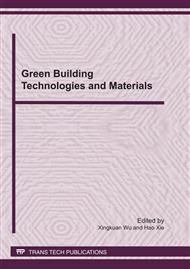p.70
p.79
p.89
p.94
p.99
p.104
p.109
p.115
p.120
Research on the Reaction Condition and Process of Microcapsules via In Situ Polymerization
Abstract:
Heat-resistant microencapsulated phase change materials (MPCMs) were prepared via in-situ polymerization, with polyurea used as the shell and low melt-point paraffin wax as the core. Optical microscope and Electron microscopy were employed to evaluate the properties and morphology of the materials. The influence factors on polymerization were discussed. Experimental results indicated that the average diameter of 2.5 μm of particles was gained when the emulsification content was 1%, the time of acidification was 60 minutes and the curing temperature was 70°C.
Info:
Periodical:
Pages:
99-103
Citation:
Online since:
April 2011
Authors:
Price:
Сopyright:
© 2011 Trans Tech Publications Ltd. All Rights Reserved
Share:
Citation:


